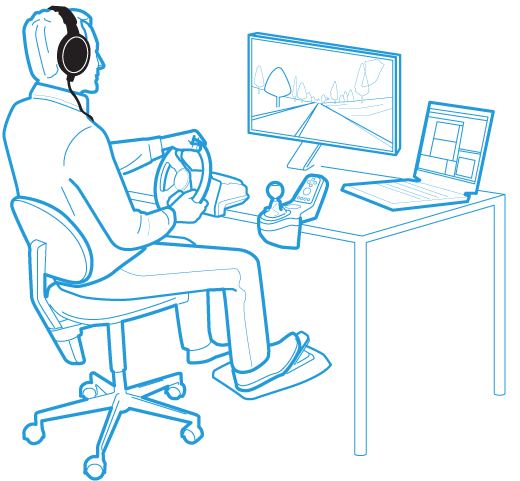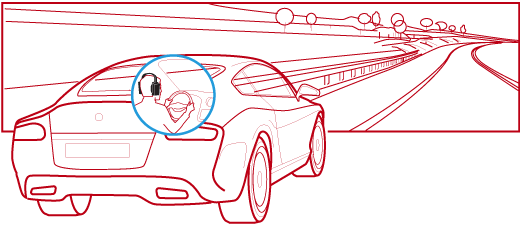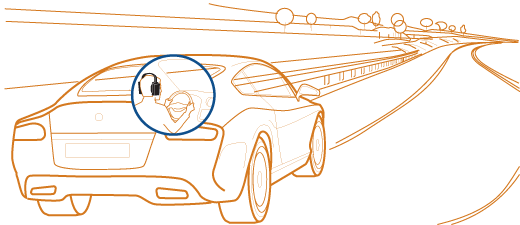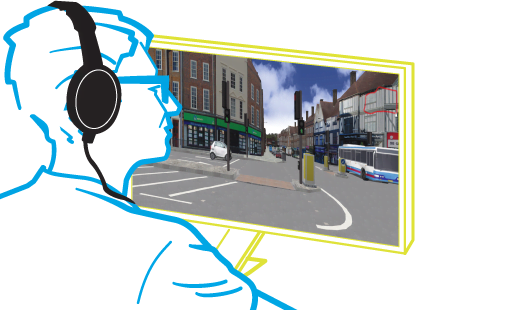
Vehicle NVH simulation
NVH simulation enables managers and customers alike to 'drive' rival vehicles and previous models in highly realistic scenarios so engineers can quantify their opinions.
Designing with respect for noise, vibration and harshness (NVH) is notoriously challenging. Engineers are also under constant pressure from the ongoing need to reduce time-to-market.
Vehicles must be refined and quiet, yet roar appropriately when we want them to – and stay within legal noise limits. And with thousands of components interacting with the structure, the total NVH can be hard to predict and design for.
NVH Target Setting
To achieve NVH performance that surpasses that of competing vehicles, design engineers need definite targets they can aim for early in the vehicle development process.
That said, our experience regarding NVH is subjective, thus making numerical targets hard to perfect – especially during the pre-prototype phase. NVH simulation enables managers and customers alike to ‘drive’” rival vehicles and previous models in highly realistic scenarios so engineers can quantify their opinions.
From these benchmarks, engineers can develop new targets that improve appropriate NVH areas and then cascade targets down to define the contributions from each subcomponent.
Vehicle Simulation and Development
Developers make changes throughout a vehicle’s development. It is useful to evaluate the effects of alterations and trial alternative design solutions - such as modified components – in a virtual prototype. With Brüel & Kjær’s NVH simulation, it is possible to test the NVH effects of alternative designs back-to-back, without making a physical prototype. Simulations can combine real-world test data and data from finite-element (FE) models, interfacing with all common FE codes.
A Desktop NVH Simulator is a complete system for use in an office or laboratory environment, enabling the user to evaluate, modify and design data interactively by ‘driving’ through a virtual scenario shown on a desktop monitor.
Based on the need for having a more consistent way of evaluating and communicating the NVH performance of a vehicle before you have an actual physical prototype, it uses driver controls – accelerator, gears, steering, and brake – as inputs to a real-time sound model that accurately recreates the sound of a car over its full driving envelope. It displays a sufficiently realistic visual scenario on a series of computer monitors so that experts and non-experts can assess the sound quality of existing or virtual vehicles with confidence while driving. It can be easily transported, for example, .
System suggestion
Data preparation software enables NVH and vehicle performance data to be extracted from recordings made on the road or on a test bench (or any other source of NVH data) and prepared for free driving in an NVH simulator. Modules include:
- Core and visuals
- Jury evaluation
- Engineering
- Engineering and jury
The hardware supplied with the standard system includes a PC, a high-quality steering wheel and pedals, three screens, to provide a more realistic impression, and a set of equalized and matched headphones. Optional hardware can be supplied.
Related productS
A full vehicle NVH simulator recreates sound and vibration stimuli in a stationary, complete vehicle with a projection screen showing the virtual scenario. This provides a controlled, immersive evaluation environment for design evaluation of sound and vibration.
System suggestion
Brüel & Kjær’s Full Vehicle Simulator integrates the Desktop NVH Simulator into a fixed donor vehicle to create a complete multimodal context. This can be provided as a complete turnkey solution, or the required NVH Simulator modules can be integrated into an existing driving simulator to add NVH evaluation capability. Vibration, for example, on the seat (three-axis), pedals, or steering wheel, is normally included in the interactive NVH stimuli.
Related product
DTS On-road Simulator allows vehicle sounds created using the Desktop NVH simulator to be experienced in a real car while driving on the road. The sounds of the existing vehicle are modified rather than replaced, resulting in a very natural presentation of the target sounds.
System suggestion
DTS On-road Simulator Type 8601-N is an optional PULSE NVH Vehicle Simulator module used for back-to-back evaluations of benchmarked vehicles or proposed targets, while driving a mule vehicle.
Using Type 8601-N, the driver can hear both the existing sound, which is then modified by the On-road Simulator in real-time, and the desired resultant target sound. The On-road Simulator can add (but not cancel) masking sounds. The controls are the same as in the NVH Simulator desktop version but implemented on the road for increased realism and contextual relevance.
Related product
The DTS Exterior Sound Simulator facilitates sound design by assessing exterior sound and auditioning alternatives. It assists design and assessment of electric and hybrid vehicle sound, as well as ‘conventional’ vehicle sound, such as exterior exhaust sound quality.
System suggestion
DTS Exterior Sound Simulator Type 8601-T is an optional module for PULSE NVH Vehicle Simulator Type 3644 and used for auralizing the exterior sound of a moving vehicle as it would be experienced by an external observer. The vehicle can be performing any driving manoeuvre (starting and moving away in a car park, rapid acceleration, etc.) in any scenario (for example, a town) and the observer can also make any trajectory, for example, stationary, or a pedestrian walking through the scenario. During engineering, contributions from the various sources can be determined using source path contribution tools.
Related product

Iscriviti alla nostra Newsletter e ricevi le informazioni più recenti dal mondo del suoni e delle vibrazioni




